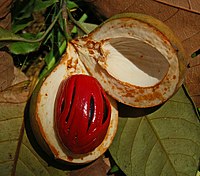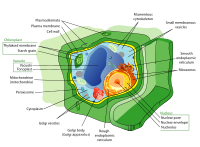
Metabolic Reprogramming and Signaling to Chromatin Modifications in Tumorigenesis.
Sign Up to like & getrecommendations! Published in 2020 at "Advances in experimental medicine and biology"
DOI: 10.1007/978-3-030-34025-4_12
Abstract: Cellular proliferation relies on a high energetic status, replenished through nutrient intake, that leads to the production of biosynthetic material. A communication between the energetic levels and the control of gene expression is essential to… read more here.
Keywords: metabolic reprogramming; metabolic pathways; signaling chromatin; reprogramming signaling ... See more keywords

Emerging functions of chromatin modifications in auxin biosynthesis in response to environmental alterations
Sign Up to like & getrecommendations! Published in 2018 at "Plant Growth Regulation"
DOI: 10.1007/s10725-018-0453-x
Abstract: Auxin is one of the most important hormone groups in plants. It has been documented to play various functions in plant growth and development. In this phytohormone group, indole-3-acetic acid (IAA) is widely considered as… read more here.
Keywords: biosynthesis; emerging functions; modifications auxin; auxin biosynthesis ... See more keywords

The histone code of the fungal genus Aspergillus uncovered by evolutionary and proteomic analyses
Sign Up to like & getrecommendations! Published in 2022 at "Microbial Genomics"
DOI: 10.1099/mgen.0.000856
Abstract: Chemical modifications of DNA and histone proteins impact the organization of chromatin within the nucleus. Changes in these modifications, catalyzed by different chromatin-modifying enzymes, influence chromatin organization, which in turn is thought to impact the… read more here.
Keywords: chromatin modifications; histone code; chromatin; fungal genus ... See more keywords

The Plant Circadian Clock and Chromatin Modifications
Sign Up to like & getrecommendations! Published in 2018 at "Genes"
DOI: 10.3390/genes9110561
Abstract: The circadian clock is an endogenous timekeeping network that integrates environmental signals with internal cues to coordinate diverse physiological processes. The circadian function depends on the precise regulation of rhythmic gene expression at the core… read more here.
Keywords: chromatin modifications; circadian clock; clock; regulation ... See more keywords

Multifaceted Chromatin Structure and Transcription Changes in Plant Stress Response
Sign Up to like & getrecommendations! Published in 2021 at "International Journal of Molecular Sciences"
DOI: 10.3390/ijms22042013
Abstract: Sessile plants are exposed throughout their existence to environmental abiotic and biotic stress factors, such as cold, heat, salinity, drought, dehydration, submergence, waterlogging, and pathogen infection. Chromatin organization affects genome stability, and its dynamics are… read more here.
Keywords: plant stress; stress; chromatin modifications; stress response ... See more keywords